Topic 22- Respiration/Excretion
Outcomes:
Compare and contrast types of respiratory systems

Sequence of mammalian respiration
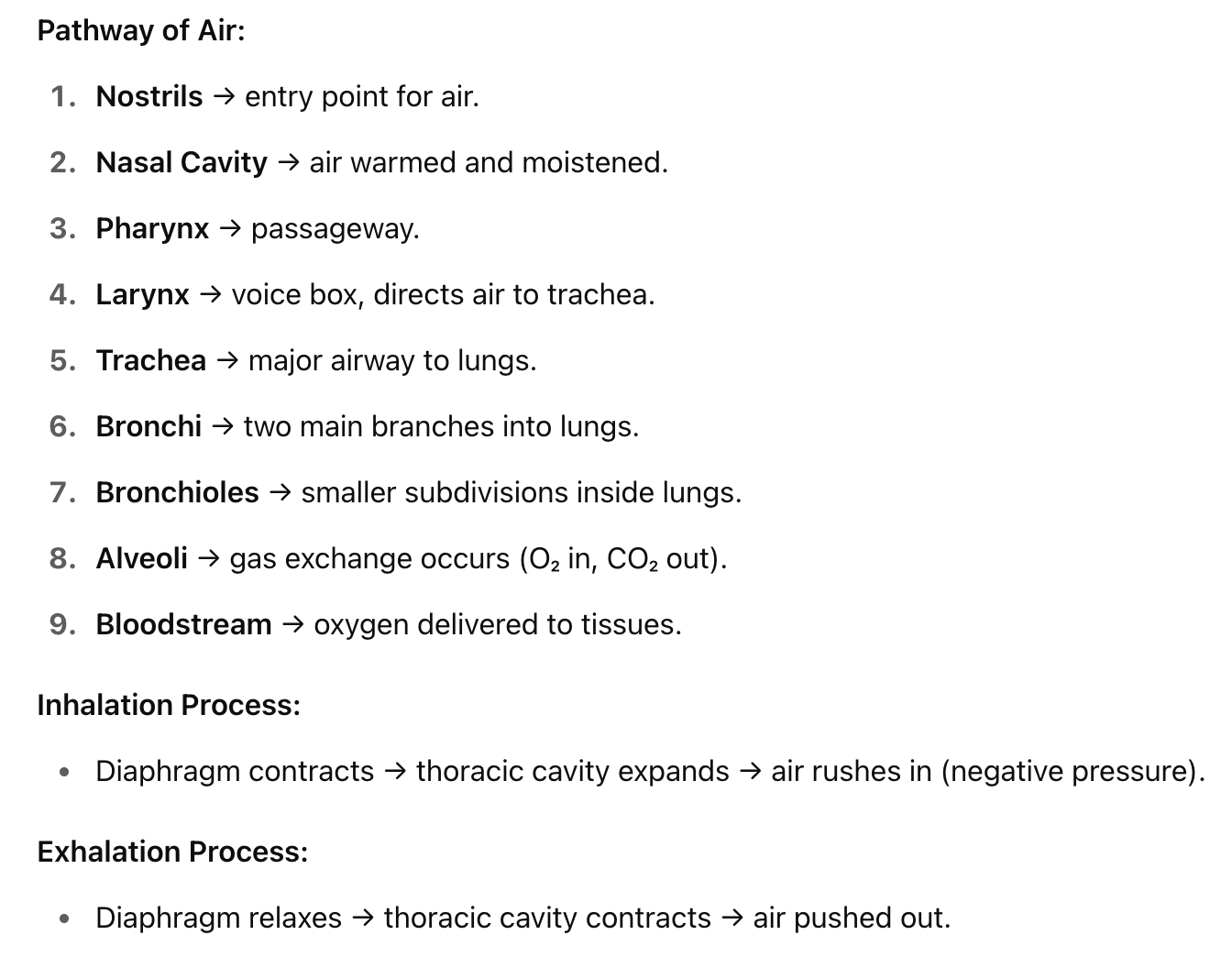
Hypothesize and diagnose the impact of variability on mammalian respiration
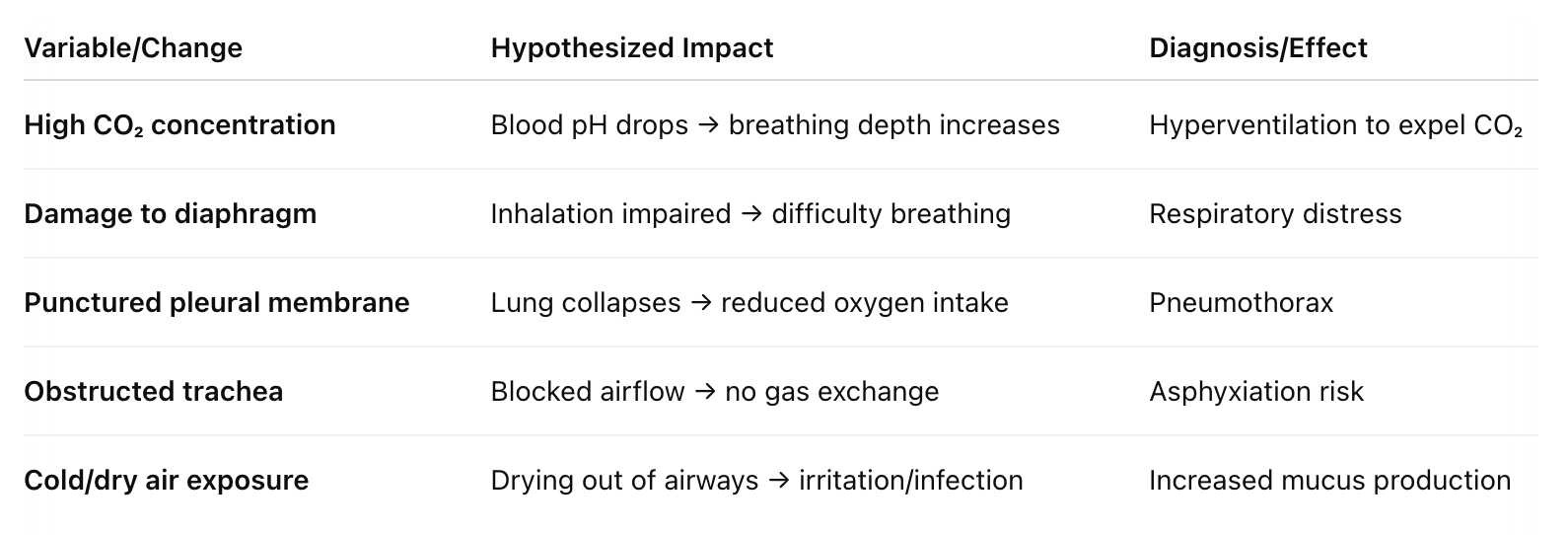
Compare and contrast types of osmoregulation
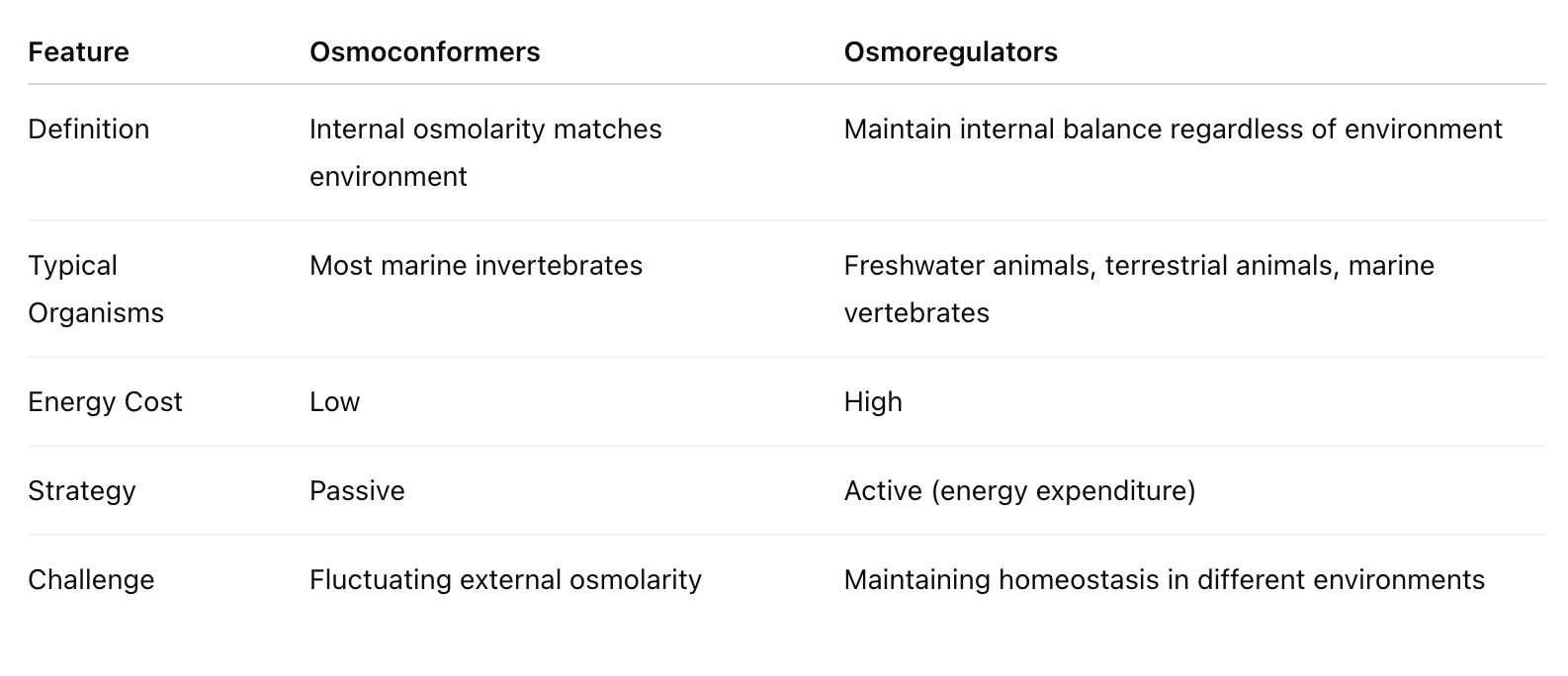
Compare and contrast types of nitrogenous waste
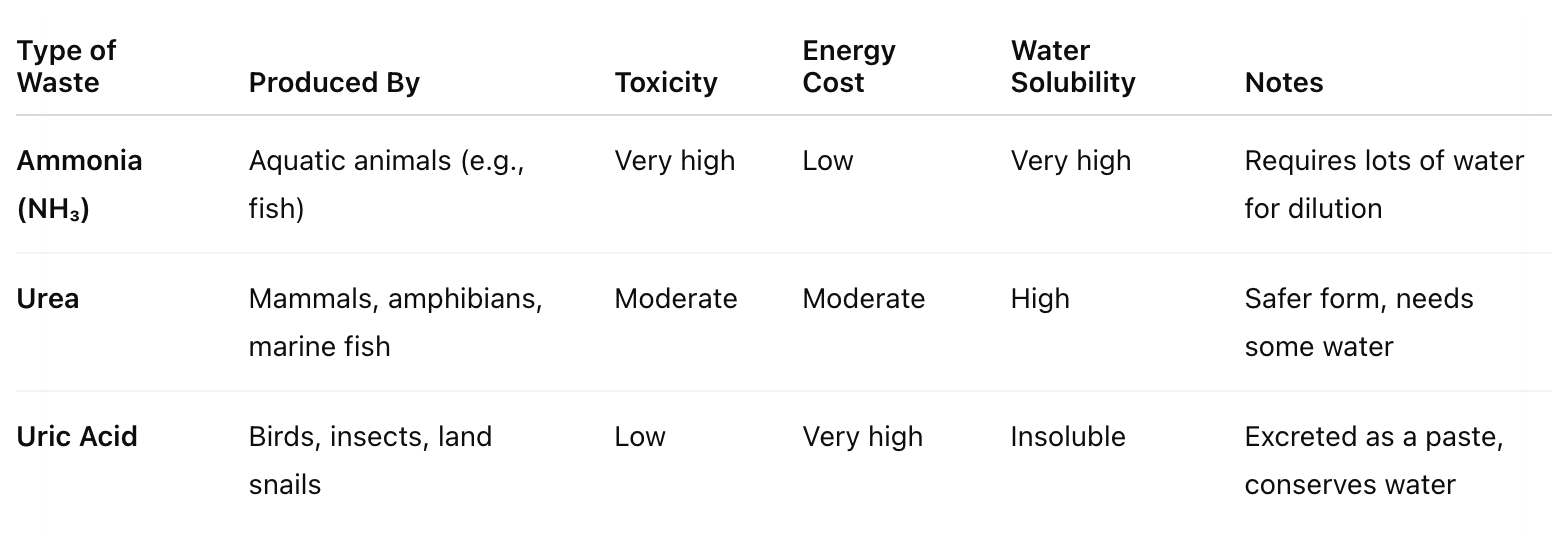
Sequence the process of excretion
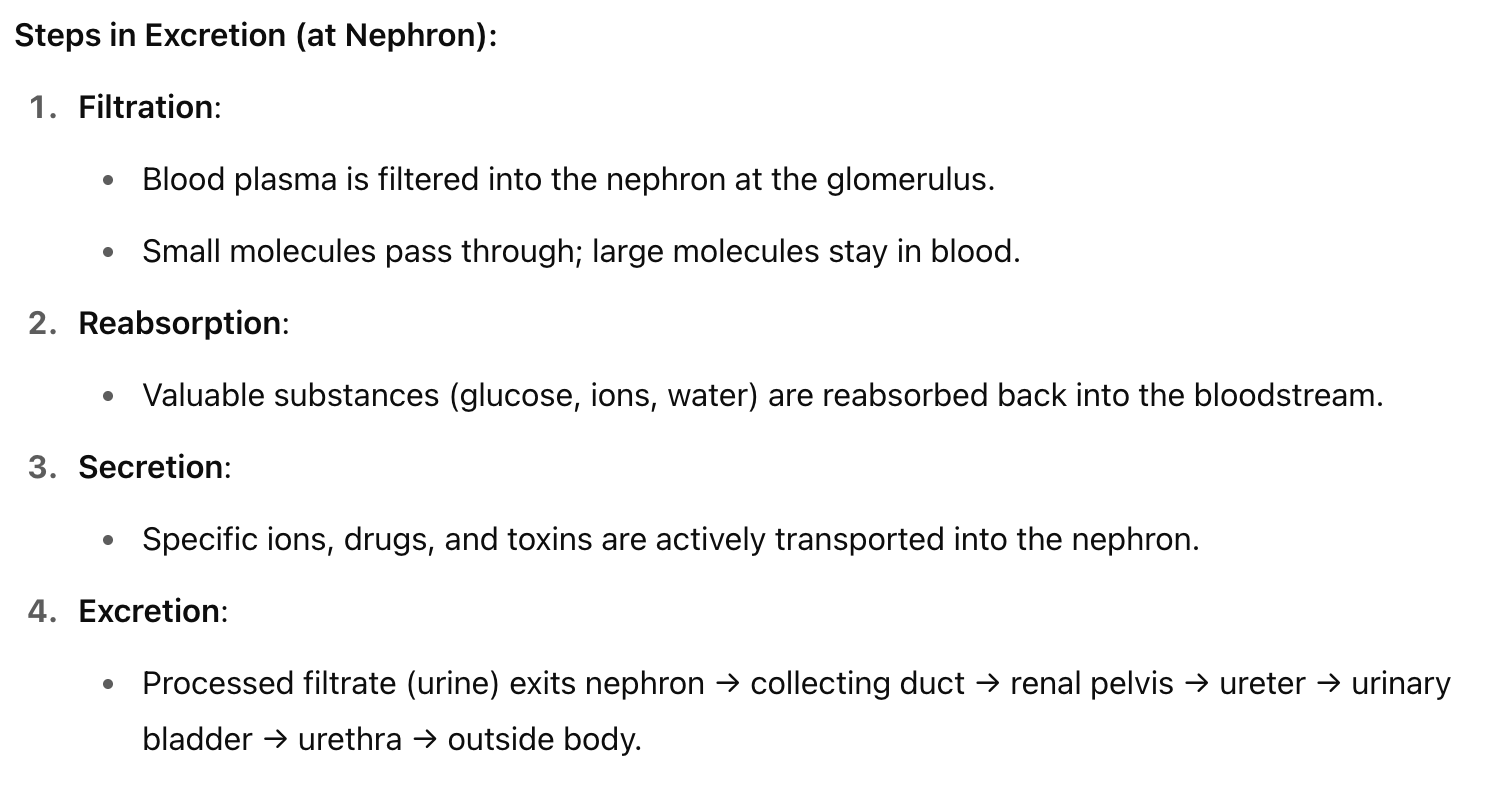
Hypothesize and diagnose the impact of variability on excretion
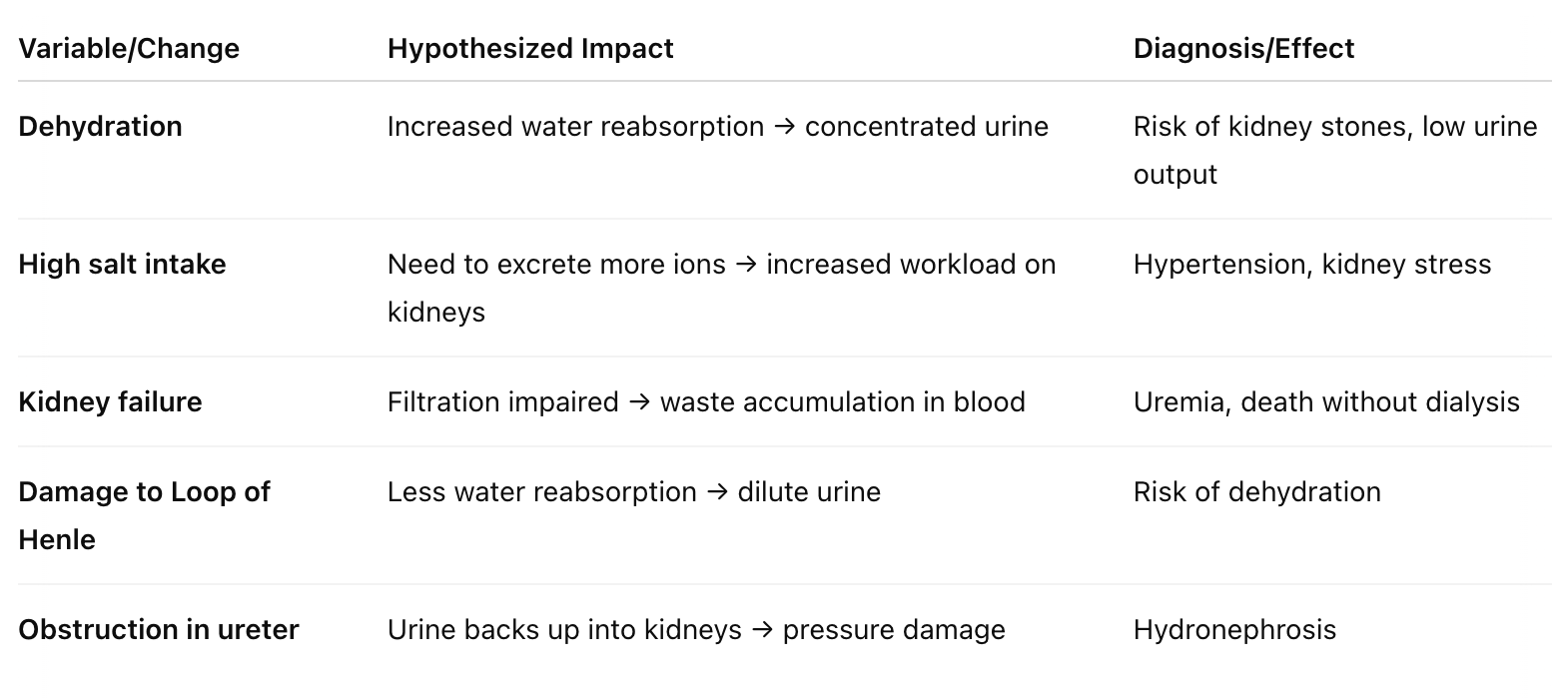
I. Respiration
A. Overview of Respiration
Cellular respiration: Process where cells use oxygen (O₂) to generate ATP.
Organismic respiration: The physical movement of O₂ into cells and CO₂ out of cells.
In very small organisms (<1 mm thick):
Simple diffusion is sufficient, no special transport systems needed.
In larger animals:
Specialized respiratory structures are required, such as:
Skin/surface (cutaneous respiration)
Gills
Tracheal tubes (insects)
Lungs
These structures must meet three key conditions:
Thin walls for gas diffusion
Large surface area
Moist environment
Associated with blood vessels (except in insects)
B. Comparison of Respiratory Systems
Gills (Bony Fish):
Use countercurrent exchange to maximize O₂ absorption by maintaining a concentration gradient across the gill surface.
Tracheal System (Insects):
A network where:
Trachea → Tracheoles → direct gas exchange with cells.
Oxygen and carbon dioxide are delivered directly to each cell.
Trade-off: High water loss.
C. Mammalian Respiration
Respiratory system is a branching set of tubes ending in specialized structures:
Nostrils: Air enters.
Nasal cavity: Air is warmed and moistened.
Pharynx: Passageway branching into the larynx.
Trachea: Main tube carrying air to lungs.
Bronchi: Two tubes, each leading to a lung.
Bronchioles: Smaller branches within lungs.
Lungs: Paired spongy organs (right lung larger).
Alveoli: Tiny air sacs surrounded by capillaries for gas exchange (high surface area).
Diaphragm: Muscle critical for breathing.
D. Regulation of Breathing
Mammalian breathing uses negative pressure:
Inhalation: Diaphragm contracts, thoracic cavity enlarges, air is drawn in.
Exhalation: Diaphragm relaxes, air is expelled.
Lung structure:
Each lung is enclosed by a pleural membrane to reduce friction during breathing.
Control centers:
Medulla oblongata:
Regulates depth and rhythm of breathing.
Monitors cerebrospinal fluid pH as an indicator of CO₂ concentration.
CO₂ + H₂O → H₂CO₃ (carbonic acid) → H⁺ + HCO₃⁻ (bicarbonate).
Increased acidity (H⁺) leads to increased breathing to expel more CO₂.
Pons:
Modifies the rate of breathing.
II. Osmoregulation
A. Definitions
Osmoconformers:
Organisms that are isosmotic with their environment.
Most marine invertebrates.
Osmoregulators:
Organisms (like humans) that actively regulate internal osmolarity, not matching the environment.
Includes freshwater animals, terrestrial animals, and most marine vertebrates.
B. Terrestrial Vertebrate Osmoregulation
Challenge: Prevent water loss in dry environments.
Water acquisition methods:
Drinking water
Consuming moist foods
Producing metabolic water through cellular respiration
Adaptations to minimize water loss:
Protective body coverings (skin, scales)
Nocturnal behaviors to avoid daytime heat
Concentrating urine to minimize water excretion
III. Excretion
A. Introduction to Excretion
Protein and nucleic acid catabolism:
Broken down for energy or converted into fats/carbs.
Deamination (removal of amine group, NH₂) occurs in the liver.
Produces ammonia (NH₃), which is toxic and must be excreted.
B. Types of Nitrogenous Wastes
Ammonia (NH₃):
Highly toxic.
Requires lots of water to dilute.
Low energy cost to produce.
Found in aquatic animals.
Urea:
Less toxic.
Requires moderate energy to produce.
Water soluble.
Excreted by mammals, amphibians, and marine fish.
Uric Acid:
Relatively nontoxic.
Very high energy cost to produce.
Insoluble in water (excreted as a paste).
Produced by birds, insects, and land snails.
C. The Basic Excretion Process (at the Nephron)
Filtration:
Blood plasma passes through a selectively permeable membrane.
Only small molecules filtered; not highly selective.
Reabsorption:
Valuable molecules (like glucose, ions) are reabsorbed into body fluids.
Secretion:
Specific ions and toxins are actively transported into the nephron to be removed.
Excretion:
The final waste (urine) leaves the body.
D. The Human Excretory System
Kidneys:
Paired, bean-shaped organs maintaining chemical balance.
Pathway of urine:
Kidneys → Ureters → Urinary bladder (storage) → Urethra (elimination).
Kidney structure:
Renal cortex: Outer region.
Renal medulla: Inner region.
Renal artery and vein: Supply and drain blood.
Renal pelvis: Funnel-shaped structure collecting urine for ureter.
Nephrons:
1 million per kidney.
Main functional unit filtering blood and forming urine.
Nephron structure:
Glomerulus (cluster of capillaries): filtration.
Bowman's capsule: surrounds glomerulus.
Proximal tubule: reabsorption.
Loop of Henle:
Longer loops allow greater water conservation (critical in desert animals).
Distal tubule: further ion regulation.
Collecting duct: final processing and urine collection.
Quick Concepts:
Countercurrent Exchange:
In both gills and kidneys (Loop of Henle), this mechanism helps maximize diffusion and efficient resource exchange.
Homeostasis:
Respiration, osmoregulation, and excretion are crucial for maintaining stable internal conditions despite external changes.